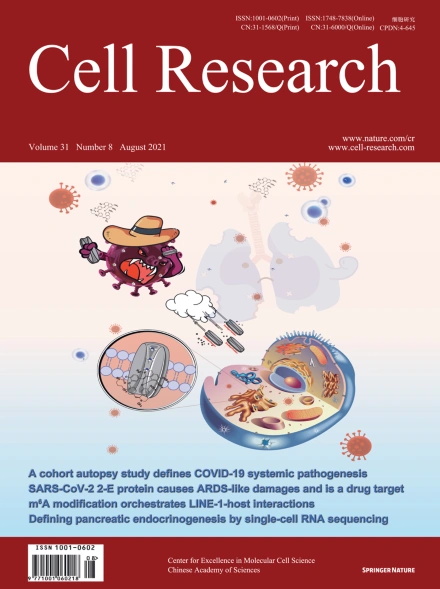
Advanced Search
Submit Manuscript
Advanced Search
Submit Manuscript
Volume 31, No 8, Aug 2021
ISSN: 1001-0602
EISSN: 1748-7838 2018
impact factor 17.848*
(Clarivate Analytics, 2019)
Volume 31 Issue 8, August 2021: 929-931
Molecular basis of ligand recognition and activation of human V2 vasopressin receptor
Fulai Zhou1 , Chenyu Ye2 , Xiaomin Ma3 , Wanchao Yin1 , Tristan I. Croll4 , Qingtong Zhou5 , Xinheng He1,6 , Xiaokang Zhang7,8 , Dehua Yang1,6,9 , Peiyi Wang3,10,* , H. Eric Xu1,6,11,* , Ming-Wei Wang1,2,5,6,9,11,* , Yi Jiang1,6,*
1The CAS Key Laboratory of Receptor Research, Shanghai Institute of Materia Medica, Chinese Academy of Sciences, Shanghai 201203, ChinaDear Editor,
Vasopressin type 2 receptor (V2R) belongs to the vasopressin (VP)/oxytocin (OT) receptor subfamily of G protein-coupled receptors (GPCRs), which comprises at least four closely related receptor subtypes: V1aR, V1bR, V2R, and OTR.1 These receptors are activated by arginine vasopressin (AVP) and OT, two endogenous nine-amino acid neurohypophysial hormones, which are thought to mediate a biologically conserved role in social behavior and sexual reproduction.2 V2R is mainly expressed in the renal collecting duct principal cells and mediates the antidiuretic action of AVP by accelerating water reabsorption, thereby playing a vital role in controlling water homeostasis. Moreover, numerous gain-of-function and loss-of-function mutations of V2R have been identified and are closely associated with human diseases, including nephrogenic syndrome of inappropriate diuresis (NSIAD) and X-linked congenital nephrogenic diabetes insipidus (NDI).3 Thus, V2R has attracted intense interest as a drug target. However, due to a lack of structural information, how AVP recognizes and activates V2R remains elusive, which hampers the V2R-targeted drug design. Here, we determined a 2.6 Å resolution cryo-EM structure of the full-length, Gs-coupled human V2R bound to AVP (Fig. 1a; Supplementary information, Table S1). The Gs protein was engineered based on mini-Gs that was used in the crystal structure determination of the Gs-coupled adenosine A2A receptor (A2AR) to stabilize the V2R–Gs protein complex (Supplementary information, Data S1).4 The final structure of the AVP–V2R–Gs complex contains all residues of AVP (residues 1–9), the Gαs Ras-like domain, Gβγ subunits, Nb35, scFv16, and the V2R residues from T31 to L3398.57 (superscripts refer to Ballesteros–Weinstein numbering5). The majority of amino acid side chains, including AVP, transmembrane domain (TMD), all flexible intracellular loops (ICLs) and extracellular loops (ECLs) except for ICL3 and G185–G188 in ECL2, were well resolved in the model, refined against the EM density map (Fig. 1a; Supplementary information, Figs. S1–S3). The complex structure can provide detailed information on the binding interface between AVP and helix bundle of the receptor, as well as the receptor–Gsinterface.
https://doi.org/10.1038/s41422-021-00480-2